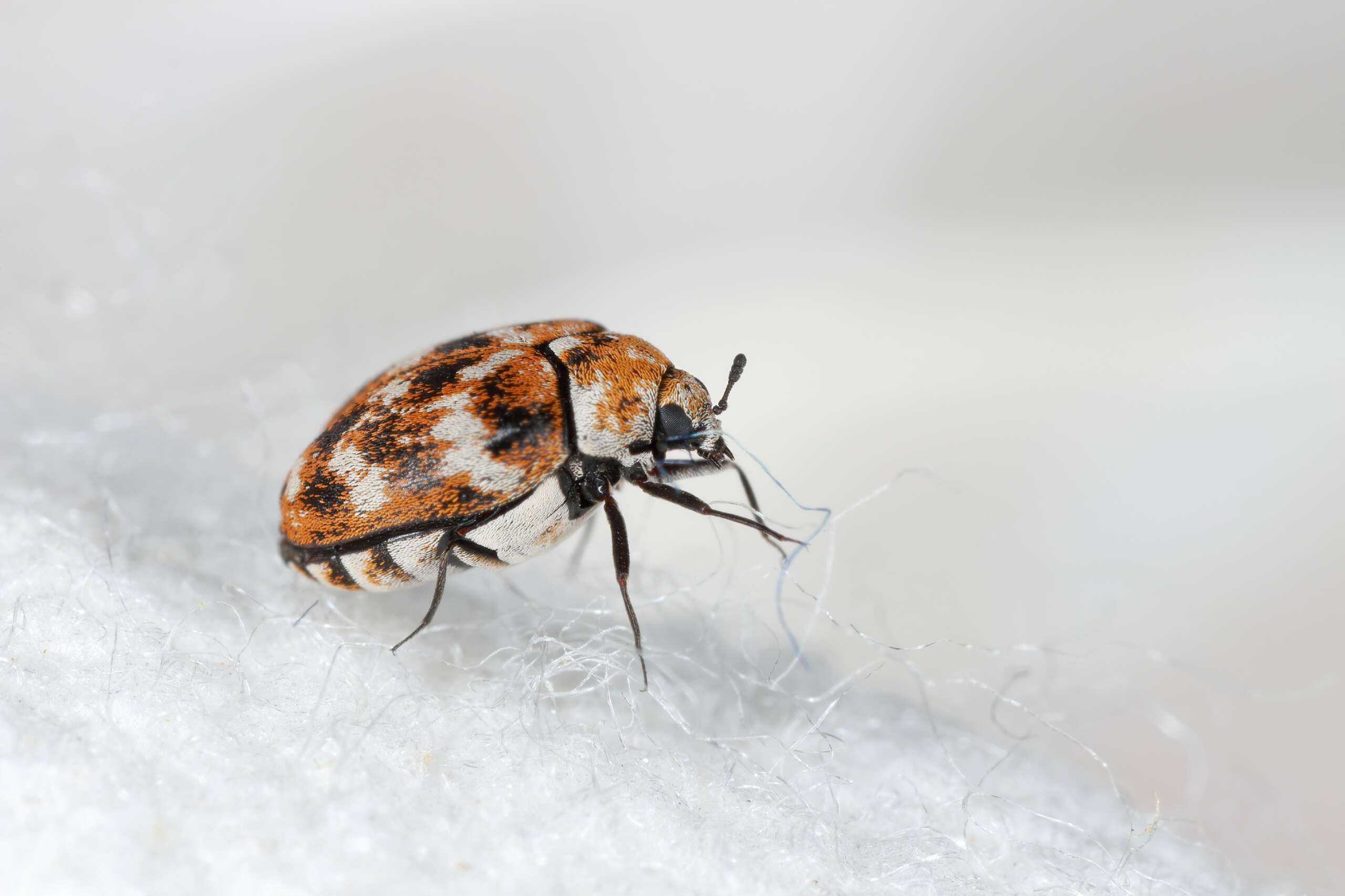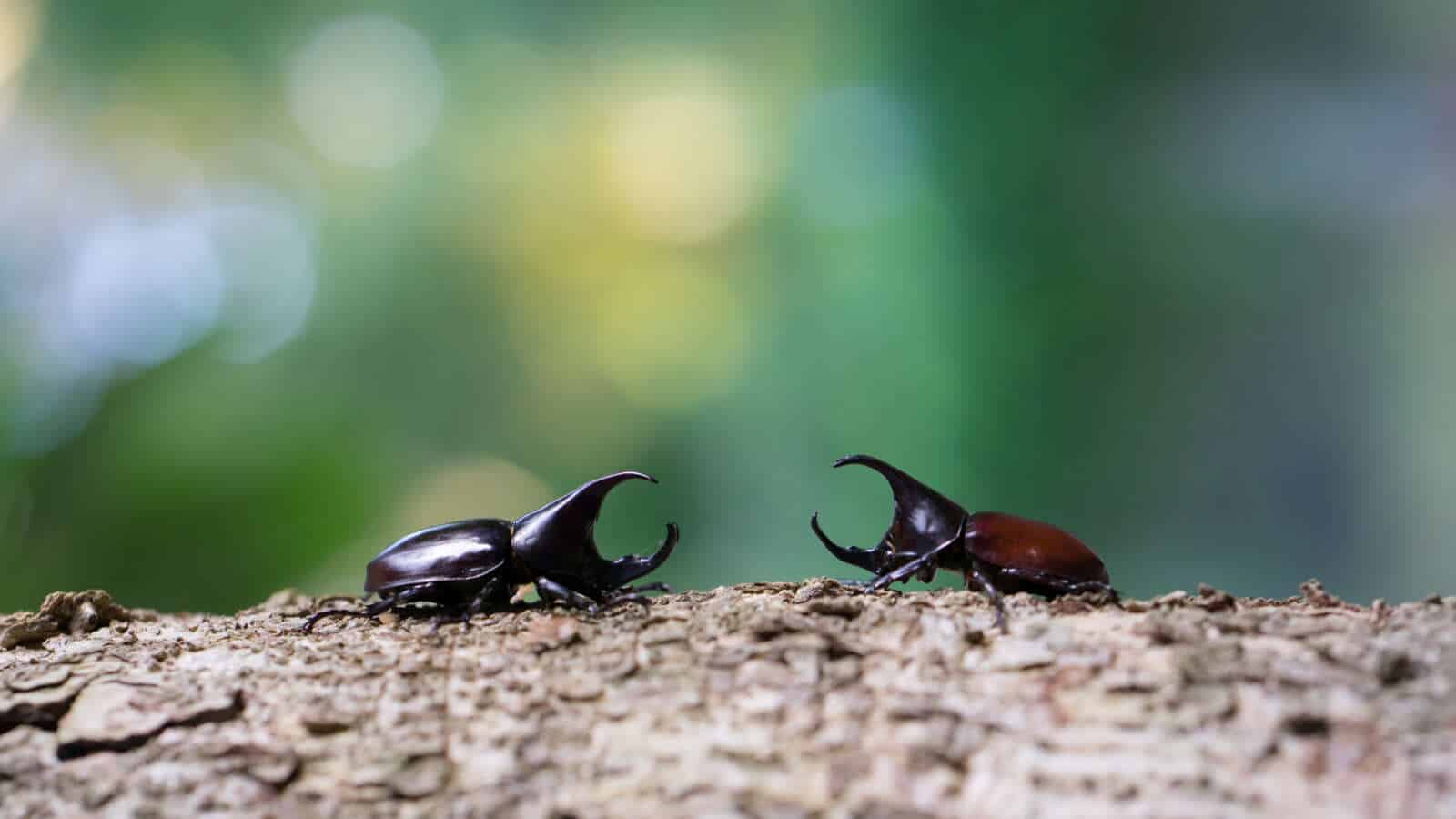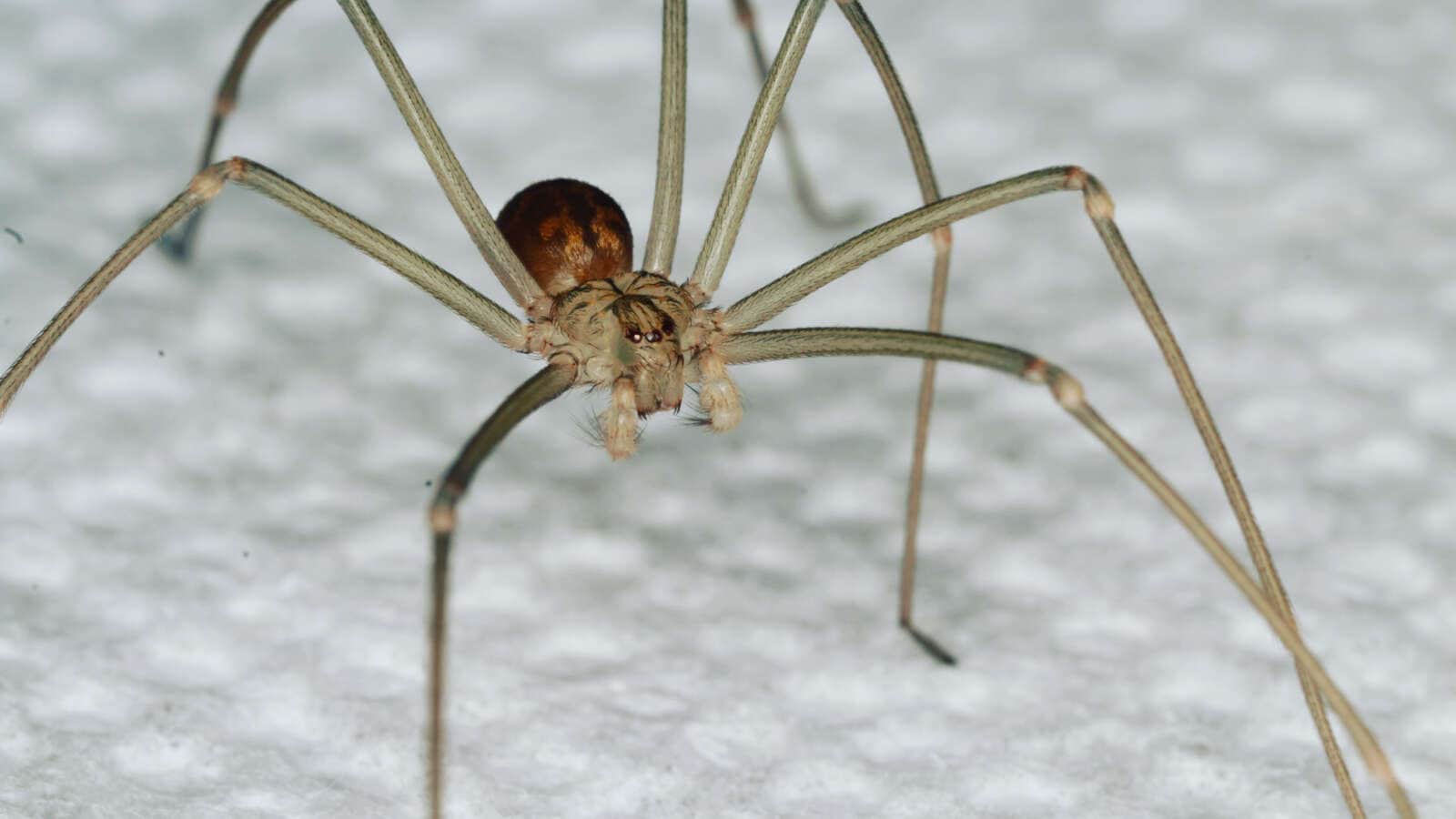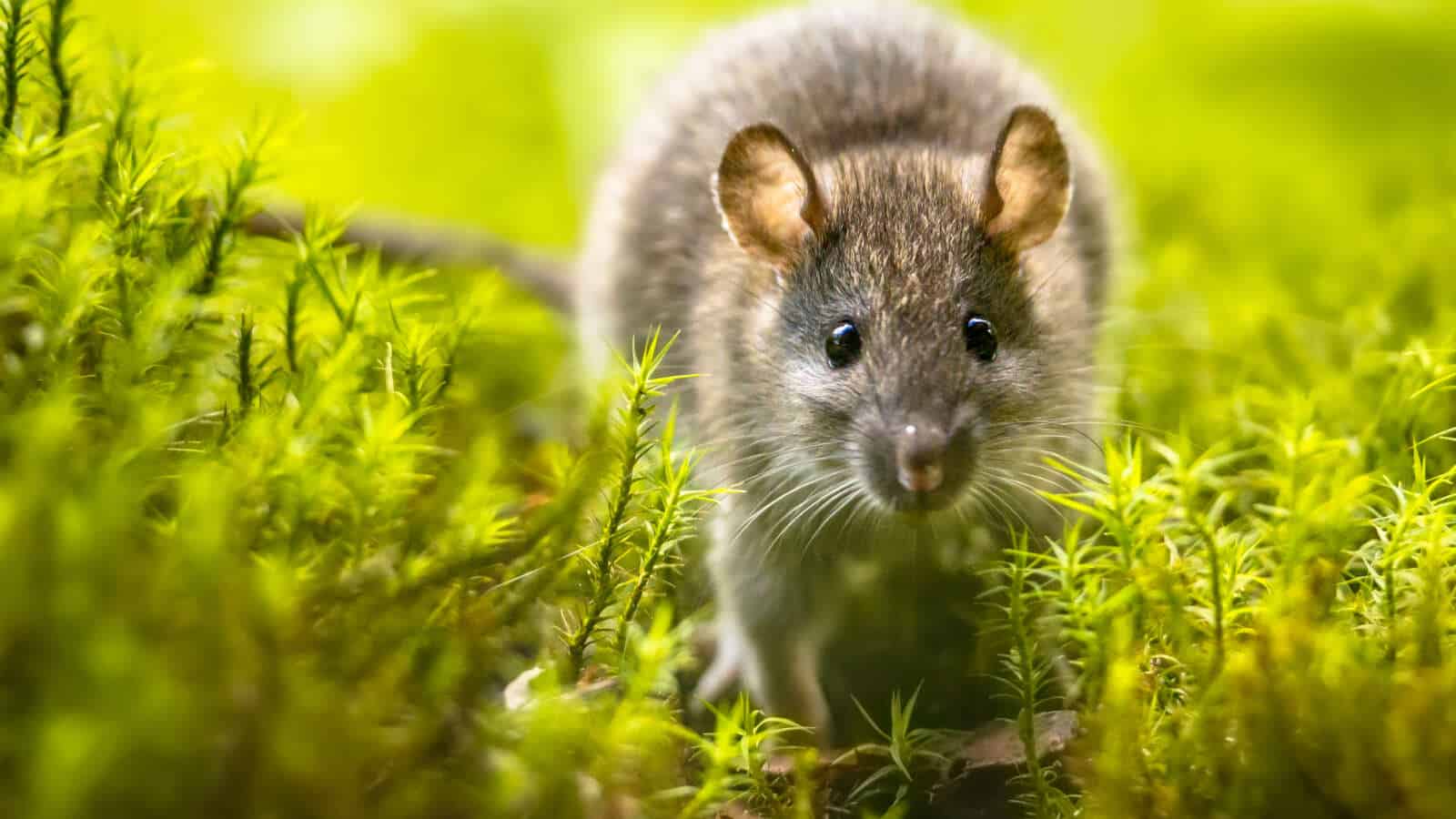5 Frequently Asked Questions About Carpet Beetles
Summary: Carpet beetles are a strange pest that eat carpet and fabric fibers. This blog gives informative answers 5 frequently-asked questions about carpet beetles in order to inform homeowners about these hidden pests. The questions are: 1) What do they look like? 2) What attracts them? 3) Do they come out at night? 4) How do they get inside? 5) Why do they return? Pointe Pest Control provides thorough pest control for busy households.
_________________________________________________________________________________________
Carpet beetles are perhaps the most appropriately-named pest ever. It’s a beetle that lives in carpet and eats the fibers, hence the name. The good news is that these pests don’t bite or sting us, and they essentially want nothing to do with us. But the bad news is that the beetles ruin our belongings when their larvae feed on animal-based items. So what are they attracted to in the first place? And how do they get indoors? Let’s explore the answers to five of the most frequently-asked questions regarding carpet beetles and their strange habits.
What Do Carpet Beetles Look Like?

Since adult carpet beetles are the size of a pinhead, it’s incredibly easy to miss an invasion until it grows out of control. The adults are 1/8 of an inch long, round, and have dark coloring or a mottled pattern. They lay 50 to 100 eggs in a dark, damp area that’s protected from activity. The larvae are even tougher to see since they blend in with their surroundings.
Young beetles have a striped pattern and tiny hairs. They just look like furry worms! The larvae’s hairs can cause an allergic reaction in certain people if they ingest them. If you find carpet beetles in your food, throw it out immediately and sanitize the area.
What Attracts Carpet Beetles?
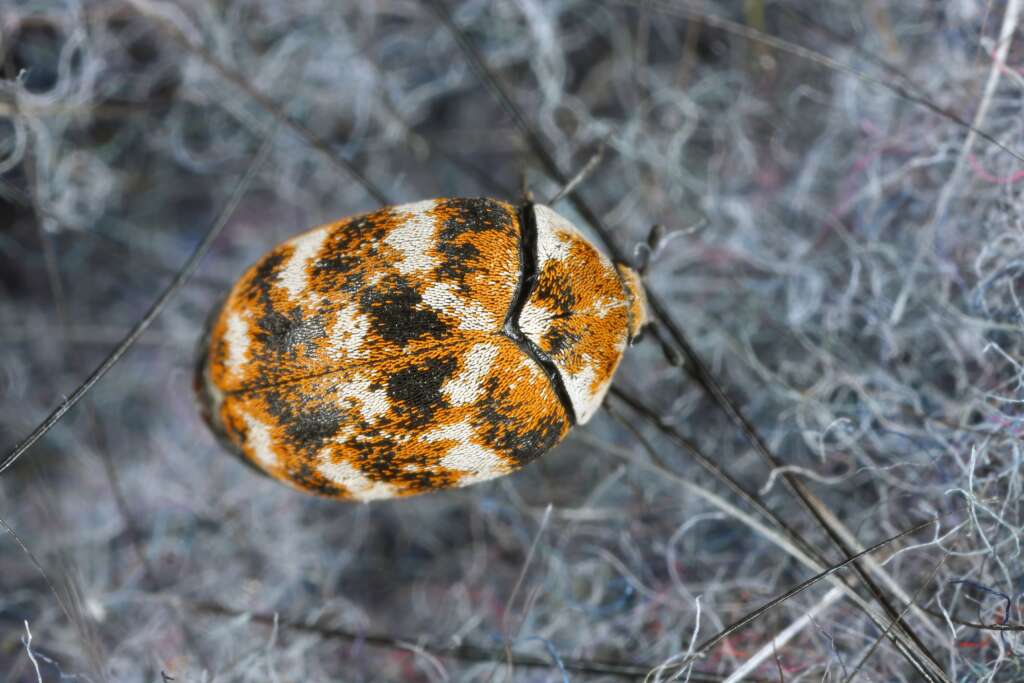
If you automatically answered “carpet” to this question, you wouldn’t be wrong. Carpet beetles have a different diet as larvae than as adults, and carpet is one of their favorites in their younger days. These beetles love keratin, an animal protein found in certain organic products. This protein, often found in natural fibers, also gives them energy throughout their growth process.
Adult beetles eat pollen and nectar, but they still seek protein-packed foods to use as their egg-laying sites. Larvae need an immediate food source in order to survive. This is why you’ll often find carpet beetles in stored food, wool, dry pet food, lint, flowers, and insect nests. Larvae also eat hair and carpet fibers, so the beetles are still attracted to carpet.
Do Carpet Beetles Come Out At Night?
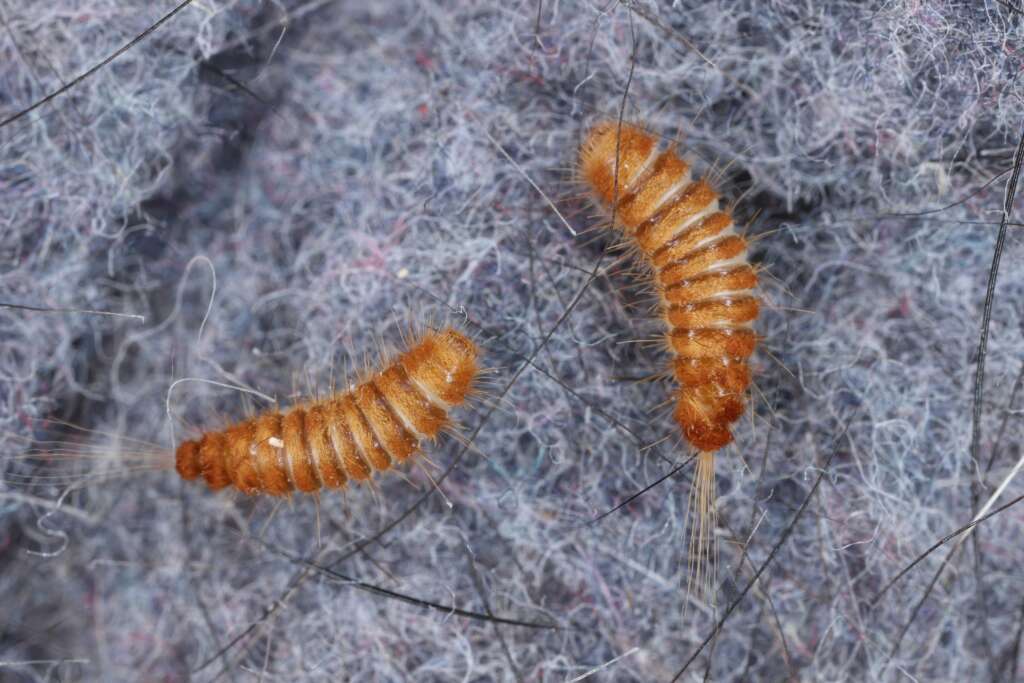
Interestingly enough, carpet beetles are mostly active at night. They can be (and are) active during the day, especially when the flowers are in bloom. But adult beetles are attracted to light, and they’re seen crawling on walls and furniture that are close to a light source. Whether it’s an overhead light or a sunny window, these insects consistently go towards that alluring light.
The larvae prefer to stay hidden at all times, likely because they’re more vulnerable. They usually live in dark and untidy areas that provide them with safe food sources. Their favorite spaces are under furniture and near baseboards since these areas fit their criteria. Carpet beetles are active at all times of day, but nighttime provides them with more security.
How Do Carpet Beetles Get Inside?
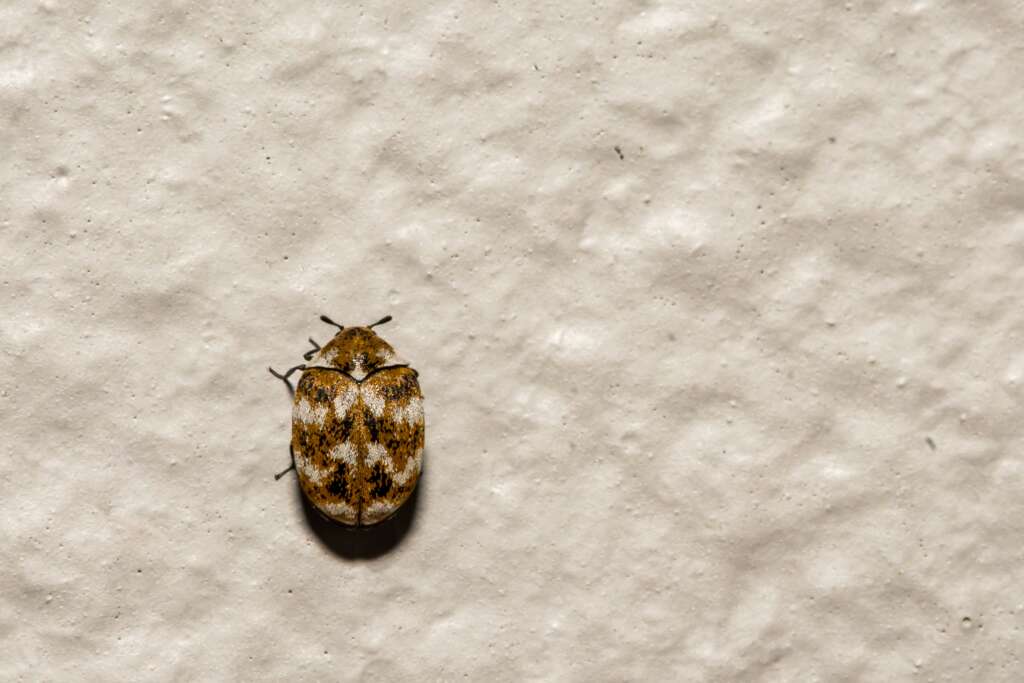
Like any insect pest, carpet beetles invade homes and businesses by crawling through the smallest cracks. Of course, open doors and windows are easy entrance points that they can utilize as well. But carpet beetles don’t need us to roll out the red carpet (get it?), so they’ll sneak in through cracks and gaps in the exterior. The areas surrounding plumbing and vents form cracks more easily than others.
The story usually goes like this: adult beetles start on flowering plants that sit near a house, find a entrance point in the exterior, and crawl inside to find an egg-laying site. Once the eggs hatch and the larvae start feeding, they’ll stay hidden until they are adults. Carpet beetle infestations occur when the cycle continues and the new adults lay their own eggs.
Why Do Carpet Beetles Return?
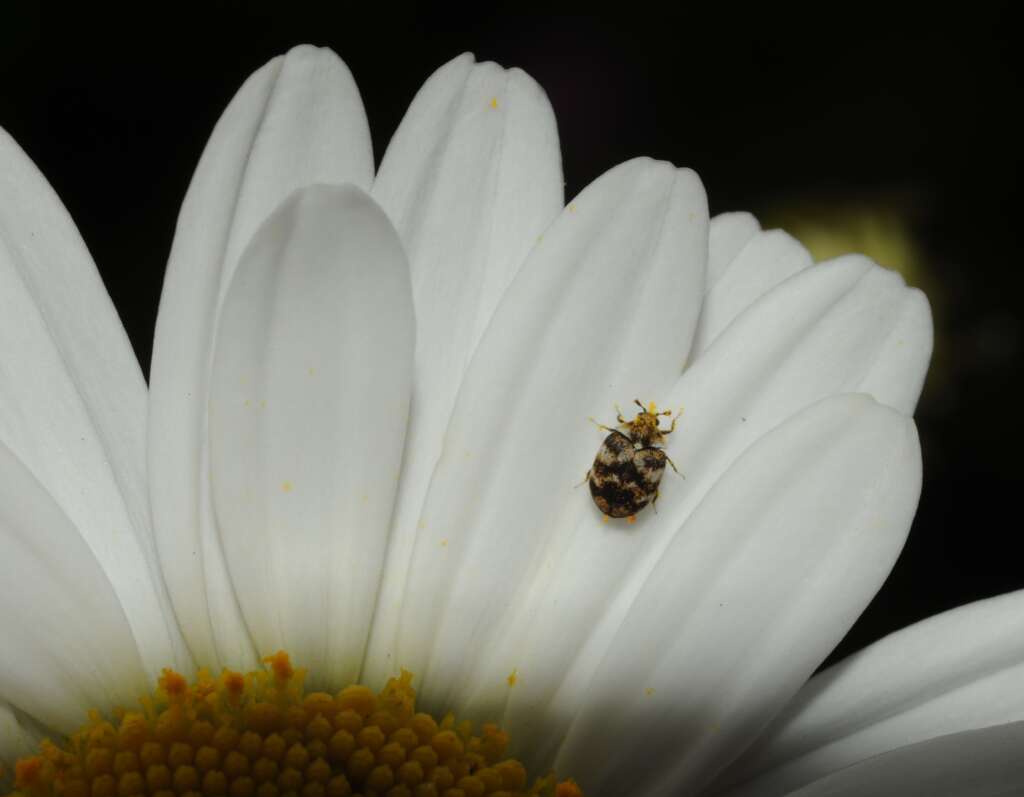
It’s not so much that carpet beetles come back after being chased out of our homes. It’s that they never really left in the first place. The eggs can overwinter and stay hidden from view, and the larvae will never leave their hiding spot willingly. As long as these insects have reliable food and a safe shelter, they are content to stay forever.
That being said, it is possible for carpet beetles to re-infest after a treatment when they have a ticket inside. For instance, if the window above a flowering bush has a faulty seal, the beetles will continue to sneak inside after enjoying their floral meals. They might also hitch a ride on flowers or animal-based materials (wool, fur, etc.), so make sure to check any of these items before bringing them into your home!
Does Pointe Provide Reliable Pest Control? Answer: Yes!
At Pointe Pest Control, we understand how frustrating it is to deal with a pest problem in the middle of your busy schedule. That’s why our experienced technicians aim to solve your pest issues with the utmost efficiency and care. We begin every service with a thorough inspection of the property, then use our observations to create a treatment plan that’s customized to the pest problems at hand. Our team leaves no stone unturned in our quest to solve each pest problem plaguing our communities. We look forward to keeping your home pest-free, so contact us today to schedule your initial service!
Citations
Green, J. (2018, October). Finding and removing variegated carpet beetles. Oregon State University: OSU Extension Service. Available at https://extension.oregonstate.edu/families-health/healthy-homes/finding-removing-variegated-carpet-beetles (Accessed on August 13, 2024).
How to get rid of carpet beetles — Black larvae removal. (2024, June 4). Luce. Retrieved August 13, 2024, from https://www.luce.sg/blog/how-to-get-rid-of-carpet-beetles
Kraft, S. & Pinto, L. (2023, November 2). Carpet beetles…not just in carpets. Pest Control Technology. Available at https://www.pctonline.com/news/carpet-beetles-not-just-in-carpets/ (Accessed on August 13, 2024).
Where do carpet beetles come from?. (n.d.). Assured Environments. Retrieved August 13, 2024, from https://www.assuredenvironments.com/blog/where-do-carpet-beetles-come-from/


